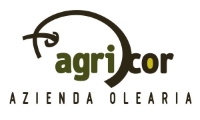Carotenes: this is a terpene provitamin contained in carrots and in numerous plants to which it gives red or orange color. Two molecules of vitamin A are produced from its metabolism. It is present in extra virgin olive oil in small quantities.
Cellulose: this is one of the most important polysaccharides. Polysaccharides are the most abundant carbohydrates. They have numerous biological functions including as energy reserves and energy transport (example: starch, glycogen) and are also known as structural components of cellulose in plants and cartilage in animals. In addition, carbohydrates and their derivatives play a fundamental role in the immune system, in fertilization and in biological development.
Certification Bodies: these are the authoritative bodies that have the task of guaranteeing that products with the PDO or PGI mark meet the requirements established in the Community regulations.
Chlorophyll: this molecule has a ring structure with a magnesium atom at the center. The atom has the function of maintaining the rigid structure to prevent solar energy from being dispersed in the form of heat before it can be used for photosynthesis. Chlorophyll (of any type) is yellowish-green in color. In olive oil, the less ripe the fruit, the more intense the color of the Chlorophyll. During the conservation of the oil, the chlorophyll breaks down and the color of the oil turns to yellow.
Cholesterol: this is a steroid or lipid more commonly known as “fat”. Cholesterol is an essential ingredient of the cell membrane of all animal cells. Humans produce most of the cholesterol necessary for autonomous biosynthesis. In adults this is between 1 and 2 grams a day. Only a small part (on average 0.1 to 0.3 with a maximum 0.5 grams) is taken with food. It is precisely here that we must be careful and ensure that its value remains within the limits allowed, otherwise our bodies can achieve values that are devastatingly low or high.
Cold extract: this is optional wording that can be on olive oil packaging. This wording is reserved for virgin or extra-virgin olive oil obtained at less than 27° C by a process of percolation or centrifugation of the olive paste.
Cold pressing: this is optional wording that can be used on an olive oil label. This wording is reserved for virgin or extra virgin olive oil obtained at less than 27 °C with the first mechanical pressing of the olive paste, using a traditional extraction system with hydraulic presses.
Consorzio di Tutela (Protective Consortium): this is the representative body of oil producers which carries out activities and initiatives for the enhancement of the product.
